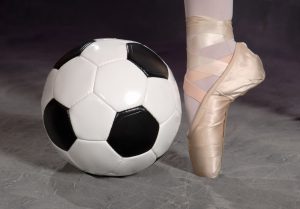
We have a staff member who is a professionally trained dancer who can provide you with the very best of professional care for dance injuries.
Visiting a podiatrist is an important part of a dancer’s feet care. If you are experiencing pain or discomfort, our podiatrists will trace the cause of the pain and treat it accordingly.
What Are Dance Injuries?
Some dance-related injuries include:
- Calluses and blisters. Tight dancing shoes lead to compressed feet and high friction which over time, this can result in blisters and calluses.
- Ingrown toenails. Ill-fitting shoes and undue pressure on the toes can lead to improper toenail growth, cutting into the soft tissue surrounding the nail bed.
- Diseased or injured nails. Dance often requires consistent impact of feet against hard surfaces, which can lead to nail damage.
- Sprained Ankles. Ballerinas put a lot of pressure onto the ankle in various positions and this over-exerting force can lead to ankle sprains
- Dancer’s heel. Also known as ‘dancer’s ankle’, this is especially common among ballet dancers because the tissue at the back of the ankle becomes compressed by a bony deformation. It can grow worse as the bone formation grows and affects more tissue.
Common dance injury treatments
A common dance related condition is metatarsalgia, where you experience pain over the balls of your feet. Because repeated high-impact bursts of motion by dancers overload the metatarsal bones in the fore front of the foot. Also the demi-pointe position for ballerinas puts further stress on the metatarsal region, making metatarsalgia more likely.
A podiatrist can treat metatarsalgia with different treatments, which can include stretching and strengthening exercises to alter pressure and foot landing.
For instance, another dance podiatry treatment is orthotic therapy, where medical grade insoles can help re-align the lower limbs and reduce pressure on the forefoot.
These techniques are great foot care for dancers, to either prevent career-threatening injuries or to deal with an existing niggling or chronic injury.
Here are some further services our podiatrists can provide:
- Injury management and prevention
- Pre-pointe assessment, and pointe-shoe fitting
- Dance specific strength training for the lower limb
- Footwear advice
- Nail issues, corns, callous and other skin irritations
- Return to dance plans